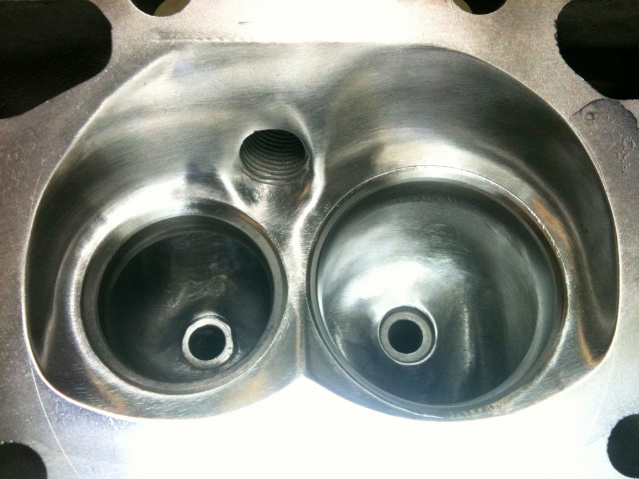you might be amazed at the difference I see in combustion chamber volume I see on O.E.M. factory heads, the better aftermarket heads tend to be much closer in volume, but you have choices to make,
The L98 aluminum head first appeared on the 1986 TPI Corvette, and was used up until the LT1 motors were introduced in 1993. Trick Flow used brand new GM Performance heads for the dyno test. The GM heads feature the same basic design elements of the production L98-
58cc combustion chambers, 1.94"/1.50" valves, high-velocity 163cc intake runners for good throttle response, and D-shaped exhaust ports for better flow -- and come assembled with heavy duty 1.27" chrome silicon valve springs, 3/8" screw-in rocker arm studs, and guide plates. The heads also have angled spark plug locations, and no provision for EGR or an intake manifold heat riser.
now the aluminum small block L98 heads generally came with 58 cc combustion chambers so 113cc sounds more like a BIG BLOCK CYLINDER HEAD COMBUSTION CHAMBER SIZE??
you can remove enough chamber volume on most heads by polishing the surface and DE-shrouding the valves to let you match the combustion chambers in the smaller combustion chambers to match the larger ones chamber volume, OR you might also consider a bit of TIG welding to take up some of the larger combustion chamber volume, if you want to decrease the larger chamber volumes.
BTW, When a head gasket thickness is listed its supposed to be the compressed gasket thickness
keep in mind it assumes you use the factory heads with the matched factory head bolts torqued to the factory suggested torque settings
polishing the combustion chambers and smoothing contours tends to reduce detonation and improve power
you can add a bit of chamber volume and reduce the potential hot spots that help cause detonation by opening and blending and smoothing the combustion chamber
THESE LINKS HAVE A GREAT DEAL MORE RELATED INFO
viewtopic.php?f=52&t=2630&p=6788&hilit=shrouding#p6788
viewtopic.php?f=53&t=4390&p=11552&hilit=polish+chamber#p11552
viewtopic.php?f=52&t=4715&p=12810&hilit=shroud#p12810
viewtopic.php?f=50&t=4618&p=13240#p13240

